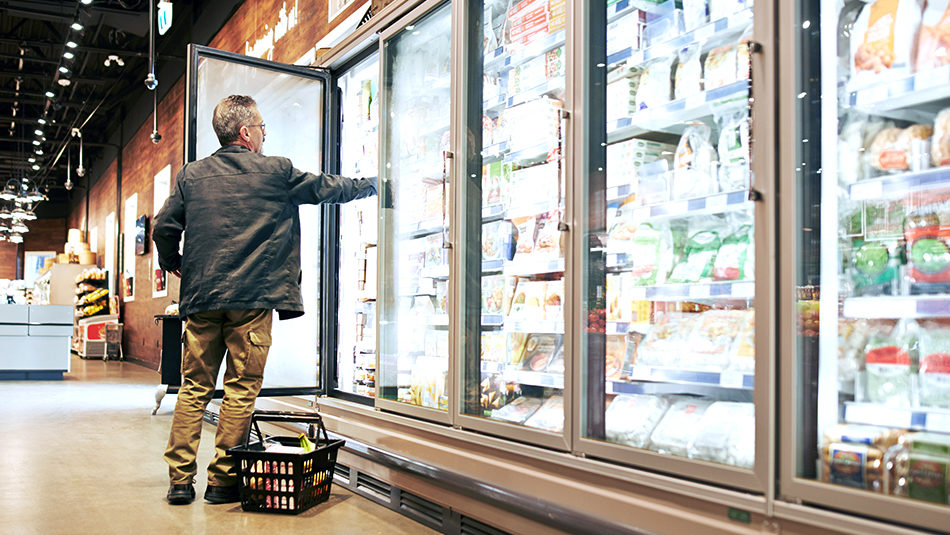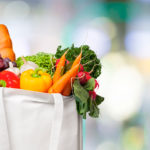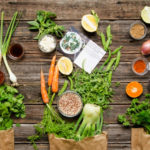
4 Changes to Watch in the Grocery Business Right Now
Many years ago, I spent a summer working construction.
One day the crew boss told me to pick up all the nails that had been dropped on the site (I was clearly unskilled labor) before quitting time.
By 1:30 it was obvious to me there was no way I was going to get the job done, so I went back to the crew boss and asked him what I should do. “Well, son,” he said, and here he took a long pause as though he was actually thinking of some advice to give me, “I suggest you work faster and more effectively.”
This is where the grocery business is right now. There are no simple solutions or magic fixes. Nobody knows what will end up being the new model long-term, and many people are trying many different models, at break-neck speed. The only thing to do is to work faster and more effectively.
Not only do supermarket operators have to deal with multiple omni-channel solutions that may or may not work, but consumers are also changing in fast and unpredictable ways. Here are just a few of the most noticeable changes of the last few months.
The Frozen Food Aisle Is Back
A recent article in Food Dive quoted Alison Bodor, American Frozen Food Institute President and Chief Executive Officer as saying “Millennials have really discovered frozen.” And they are not alone. Five years ago sales growth in the fresh perimeter of supermarkets outpaced frozen fivefold. By contrast, 2018 saw frozen aisle sales growth of +2.6 percent, almost double the +1.4 percent of fresh, and well ahead of total store growth of +1.7 percent. Time-starved consumers are rediscovering the convenience of frozen.
Manufacturers have stepped up their game, targeting today’s health-conscious consumer with significant improvements in existing products. (Think Nestle’s Lean Cuisine line revamp.) And new product introductions offering plant-based foods and other healthier options. (Think Amy’s.) The resurgent growth of frozen foods has not escaped the notice of leading CPG companies. Conagra recently paid $10.9 billion to acquire Pinnacle Foods. They wasted no time updating their Banquet line and revamping Healthy Choice with power bowls, new flavors and meatless options. Most recently they added a line of vegetable pastas to their Birds Eye brand. That only gets them back in the game, as Green Giant and Del Monte Fresh have already introduced similar offerings.
The Home Delivery Market is Already Segmenting
In 2016, according to an article in Forbes, only 23 percent of US consumers reported having bought a CPG product online. By 2018 that number had more than doubled to 49 percent. They go on to predict that by 2022 up to 70 percent of US shoppers will be shopping for groceries online. Since Food Logistics reports that 20 percent are already buying groceries online every month, this does not seem like a far-fetched prediction. In fact, the Food Marketing Institute claims that shoppers buying from online-only food stores increased from 16 percent in 2015 to 28 percent in 2018.
Several companies are capitalizing on this growth to begin segmenting and differentiating themselves from the Walmarts and Amazons of the world. Fresh Direct is responding to challenges in New York from Instacart, Amazon, Peapod and Walmart by continuing to deliver restaurant–quality ingredients, but now offering same-day delivery. This required opening a new massive 400,000 sq. ft. facility, and did not come without growing pains. But they are now expanding to new markets including Connecticut and Washington, D.C. (Walmart is aggressively expanding its delivery program this year too, with plans to double the number of stores offering the option to 1,600. And their order-online, pick-up-in-store program is growing even more rapidly, with another 1,000 stores being added this year for a total of 3,100).
Another player in this space, Thrive Market, offers only natural and organic products. They view Amazon’s purchase of Whole Foods as an opportunity to differentiate themselves, as Whole Foods brings in more mainstream products. In an article in Digiday, Nick Green, CEO of Thrive said, “What the Whole Foods acquisition taught us is that the future is omni-channel. Everyone’s raising the bar, and we want to tap into that too. We want to be the platform that people trust for innovative, all-natural brands and that’s where we’re planting our flag.”
Meanwhile, when it comes to meal kit services, Blue Apron has announced a partnership with Weight Watchers to help shore up its flagging customer count.
And Purple Carrot, the plant-based meal kit company, introduced Extras, a new line of breakfast and lunch options that take only five minutes to prepare.
Kroger, in the meantime, is expanding its Home Chef customizable in-store meal kits (which allow consumers to change and upgrade recipe ingredients) to 700 more locations. And for the first time is offering the option for home delivery customers
Data, Robots and More
Kroger recently announced a partnership with Microsoft to pilot data-driven stores that will enhance customer experiences and drive profits. Two test stores will use electronic displays instead of shelf tags to tell consumers about not only pricing, but special offers, nutritional information…and ads, for which Kroger will of course charge the item’s manufacturer. The system will also automatically alert store personnel when there is an on-shelf out-of-stock situation.
One of the more esoteric changes coming to grocery is a plan by Ahold to introduce robots to all 172 of their Giant stores. The robots locate spills that may prove hazardous to customers, and quickly alert store personnel so they can take corrective action. Ahold is also expanding same-day delivery options, through their Peapod partnership, in markets where only next-day service is currently available. They are also experimenting with self-driving delivery vehicles.
In March, Kroger announced expansion of its autonomous, driverless delivery service, which they piloted in Scottsdale, AZ last year, to two Houston, TX stores.
And Albertson’s customers can sign up to get alerts on where their order is, including a live map of the delivery truck location once their order is en route.
Changing Consumer Habits Impacting Grocery Retailers Differently
A Euromonitor report quoted by Food Navigator, found that impulse snack purchases have declined over the last five years as more people shop online or go directly to the prepared foods section of the store. While overall snacking is up, sales of chips and candy bars are not, with healthier options taking their place.
Convenience stores are also upping their game to attract more quick-trip, impulse purchases by broadening their offerings to include more healthy and prepared food options. Aldi recently opened a 6,000 sq. ft. store called Aldi Local in London. It is half the size of a regular Aldi, but larger than the average convenience store. The store caters to Millennials and carry about 300 fewer bulk items a regular Aldi offers, targeting customers who don’t have a car. Lidl is testing a 1,000 sq. ft. convenience store format in Arlington Va. called Lidl Express. In New York, Whole Foods is also experimenting with a hybrid, convenience store format called Whole Foods Market Daily Shop. The store has self-checkout lanes, an acai bowl station, a small produce section, grab-n-go items and other ‘bodega-style’ offerings.
Dollar stores may be seeing the end of a long growth run, with Family Dollar announcing it will close 390 stores, on top of the 84 they closed last year. And while Dollar General announced aggressive plans to open 975 new stores, their profit forecast for 2019 sent shares down 6% in mid-March. They are investing heavily to improve customer experience, remodeling 1,000 stores, shortening cashier lines and taking over frozen and fresh distribution. Southeastern Grocers announced the closing of 22 more stores in February.
On the plus side, Walmart reported extremely strong 4th Quarter results (but announced 9 store closures), Wegmans stated that they will open 17 new stores, and Amazon is rumored to be on the hunt for an independent chain to buy.
Nimble Productivity is Leading the Future of the Grocery Business
With all this retail activity and uncertainty, grocers are looking to suppliers to come to them with rapid solutions to the changing environment, just as they are also rapidly changing. Long lead times in product development will have to be shortened, or else by the time a new product is available it will be a solution to a problem that has already ceased to exist. The supplier who is nimble enough to come to retailers with products that meet customer demands for ultra-convenient, healthy foods that don’t compromise on taste, and can be delivered in multiple formats, will be well rewarded. But shortening development timetables and thinking of entirely different ways to package and deliver products will not be easy. In fact it will be painful.
Which reminds me of another occurrence that happened when I was working construction. One day one of the guys missed his nail and crushed his thumb. It was basically flat. He just wrapped a bandana around it and went back to work. When he saw the look of amazement on my face, he said, “I just channel the pain into productivity.”





